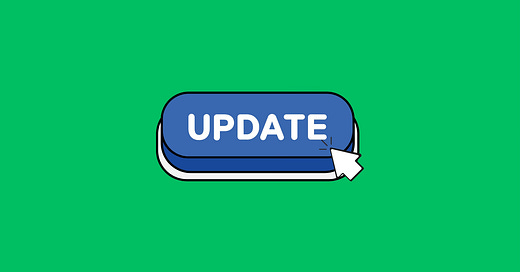Is It Time to Update Your Competency Model?
A competency model should evolve with your organization—if it no longer reflects real work, delivers results, or aligns with strategy, it’s time for a review.
A Competency Model is an essential tool in guiding how organizations recruit, develop, and evaluate talent. But even the best models don’t last forever. Over time, changes in strategy, technology, and job roles can leave a once-useful framework feeling outdated or disconnected from the realities of work. So how do you know when it’s time to review or refresh your model?
Start by asking the following key questions:
Does the model still align with your organization's current mission, vision, and priorities? Has it kept up with changes in job functions, new technologies, and emerging skills like digital literacy or systems thinking? Are its behavioral indicators clear, relevant, and useful in performance evaluations?
Beyond content, consider its usability. Is it easy for HR, managers, and employees to understand and apply? Does it integrate well with your recruitment, training, performance management, and succession planning systems? Has the model helped address actual capability or performance issues? And just as important, when was it last updated?
Even the best-designed model can fall behind if it hasn't been revisited in years. A useful benchmark: If your model hasn’t been reviewed in three to five years, it’s time to take a closer look—especially if it isn’t delivering measurable results.
Need More Guidance?
Use the checklist below to assess the health and relevance of your organization’s competency model. For each item, answer Yes or No and make notes or provide evidence as needed. For each question, give yourself one point if the answer is “Yes.” Total your score out of 12.
Alignment with Strategy. Is the model still aligned with your organization’s current mission, vision, and priorities?
Reflects Current Roles. Do the competencies still match what employees actually do in their day-to-day work?
Clear Behavioral Indicators. Are the levels (e.g., basic to superior) observable, distinct, and clearly described?
Includes Emerging Competencies. Does the model include digital skills, systems thinking, adaptability, or other modern capabilities?
Ease of Use. Do HR professionals, supervisors, and staff find it easy to understand and use the model?
Supports Talent Management. Is the model aligned with your recruitment, learning and development, performance, and succession systems?
Positive User Feedback. Are employees and managers giving feedback that the model is helpful and relevant?
Responds to Organizational Changes. Has the model been updated in response to changes in structure, roles, or mandates?
Addresses Performance Gaps. Has the model helped resolve recurring performance or capability issues?
Reflects External Trends. Has the model kept pace with new technologies, policies, or industry standards?
Age of the Model. Has it been more than 3 years since the last major update?
Evidence of Impact. Are there visible improvements in talent decisions or workforce development because of the model?
Scoring Guide
A score of 10 to 12 suggests your model is in good shape. Minor updates or validations may be enough.
If you score 7 to 9, the model is showing signs of wear. A structured review and refresh is a smart next step.
Scores between 4 and 6 indicate that your model may be misaligned or underperforming. A more substantial revision is likely needed.
A score of 3 or below signals that your model may no longer be relevant or effective. A full redesign should be considered.
If you need help in evaluating or updating your competency model, send me an email.
A Living Framework
A good competency model is not just a document—it’s a living framework that evolves with your organization. It should reflect current work realities, anticipate future needs, and be clear and usable for those applying it.
If your review suggests a gap between the model and what your people or systems need, don’t wait for a complete breakdown. Involve your teams, gather insights, and begin the process of updating it now. You’ll be better positioned to build a stronger, more capable workforce that’s aligned with your future direction.




